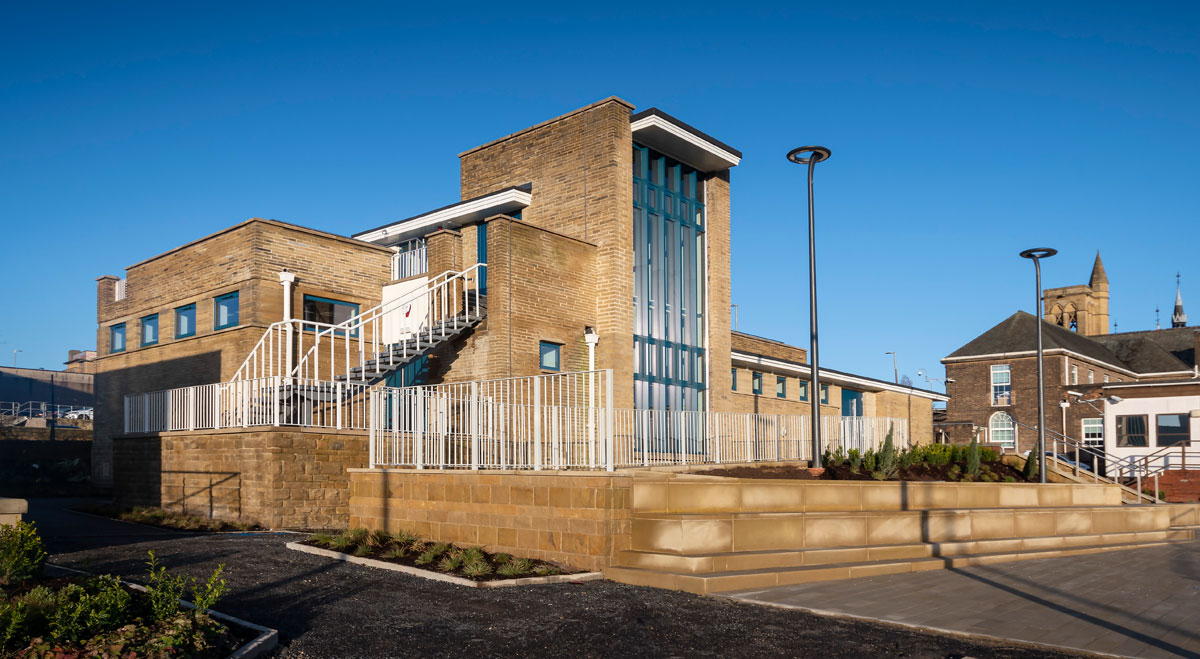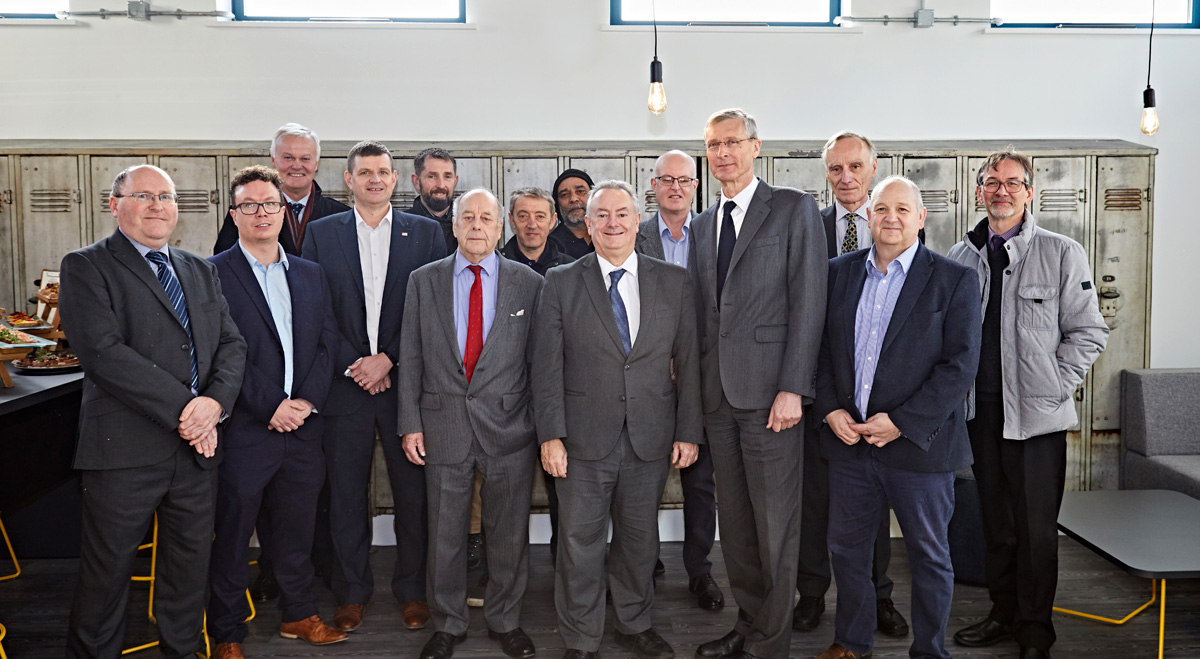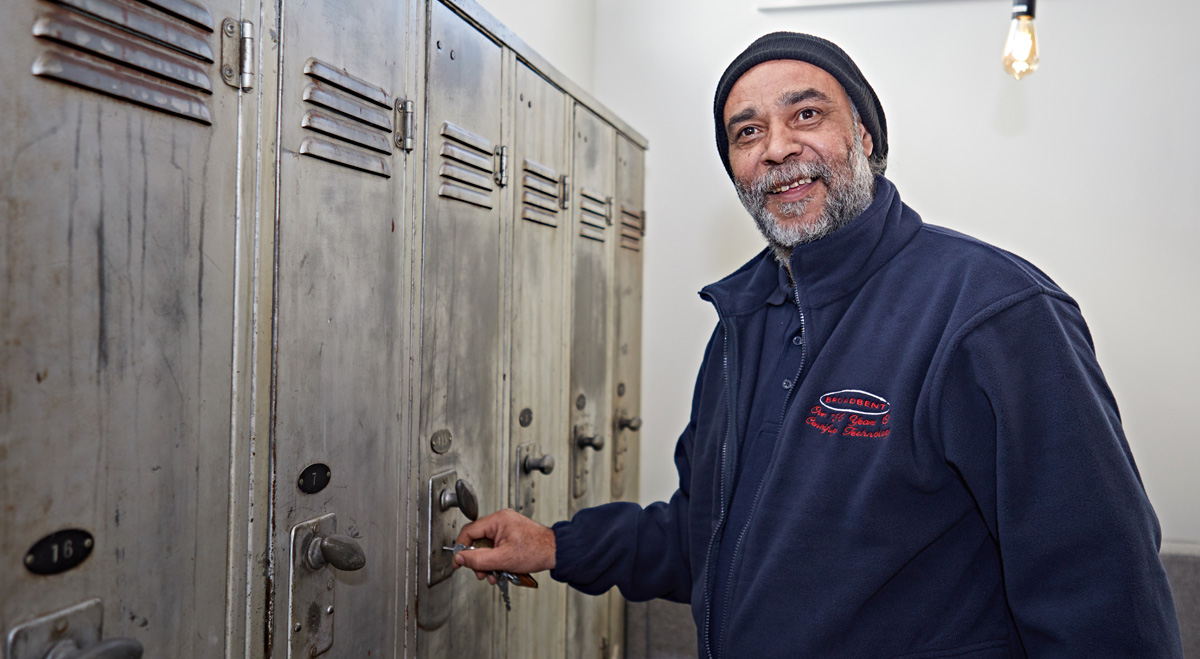
A Grade II-listed former bath house, originally built by local firm Thomas Broadbent and Sons and situated adjacent to the University’s Barbara Hepworth Building, is renovated for a new role
ONE of Huddersfield’s hidden architectural gems has been transformed into an attractive and unusual gallery-cum-coffee house and restaurant, destined to become a popular public space for meeting, eating and art appreciation. But among the attendees at a special unveiling event there were men who remembered its original function – as a bath house where scores of foundry workers could shower away a day’s grime.
“It’s an amazing transformation,” was the reaction of Simon Broadbent, joint managing director of the Huddersfield firm Thomas Broadbent and Sons, established in 1864. Now an innovative engineering company trading globally, it once operated a large foundry, developed during World War One to manufacture steel shells.
Over subsequent decades it diversified and in 1953 an Iron and Steel Foundries Act meant that Broadbent’s needed to provide new washing and drying facilities for 120 workers. The result was a no-expense-spared structure designed by local architectural practice Abbey Hanson Rowe, now known globally as AHR.
After the foundry and its bath house on Queen Street South became uneconomic from the 1980s, Broadbent’s eventually sold the land to the University of Huddersfield. The award-winning Barbara Hepworth Building – for students of art, design and architecture – now stands on the foundry site. The bath house, a Grade II Listed building, was preserved and now it is the Sovereign Design House, offering light and airy exhibition space, shared with the Toast House café.

At the special event, University Vice-Chancellor Professor Bob Cryan welcomed visitors from Broadbent’s and partners in the restoration project – construction firm Morgan Sindall and architects AHR, whose assignment was to remodel a building the firm had designed almost 70 years ago.
Addressing Broadbent employees, Professor Cryan asked: “Can you have imagined, after showering away the grime after a hard day’s graft in the foundry, that this interesting but workaday building would one day be ingeniously repurposed as a coffee house and exhibition space?”
“We have provided our campus and the town as a whole with some splendidly designed and constructed new buildings – state-of-the art spaces for teaching, research and student recreation,” continued Professor Cryan.
“But there has been another important strand in our campus redevelopment – namely the conservation and re-use of historic buildings that are part of the heritage of Huddersfield,” he added.
As they looked around the remodelled bath house, visitors could examine an exhibition titled COLLECTED – featuring artwork produced by students over the course of several years.
“The projects demonstrate the diversity and innovation that is integral to the School of Art Design and Architecture, displaying traditional approaches as well as contemporary digital skills and techniques,” stated Professor Nic Clear, who is Head of Architecture and 3D Design
“Alongside the School’s new Barbara Hepworth Building, Sovereign Design House will constitute an important contribution to the cultural life of the University and to the town of Huddersfield,” he added.

But among the artworks and alongside the catering facilities, visitors also saw some of the original shower fittings and lockers, preserved and re-installed as part of the redesign. This meant that memories flooded back for visitors like long-standing Broadbent employee Graham Smith, a former foundry worker. At the special event, he even brought along his original locker key!
Simon Broadbent recalled how the lockers also served as clothes drying facilities, with hot air pumped into them. At its peak, the bath house’s 16 showers catered for 120 men as they came off shift. The roof had to accommodate an enormous water tank and in the basement there was a powerful boiler. This dictated the multi-storey form of the building, but it also has design features inspired by the influential 20th century American architect Frank Lloyd Wright.
This was a factor that meant local conservationists secured Grade II Listed status for the bath house. Now, it has a dramatic new lease of life.
More Stories
Students win London Marathon mile makers comp
Architecture students win the national competition for the mile markers that will be erected on the London Marathon route
New book explores classical architecture
Professor Nicholas Temple’s The Routledge Handbook on the Reception of Classical Architecture is the first comprehensive study
Actor Sir Patrick Stewart visits new £30m building
Emeritus Chancellor Sir Patrick Stewart tours the School of Art, Design and Architecture’s new Barbara Hepworth Building
